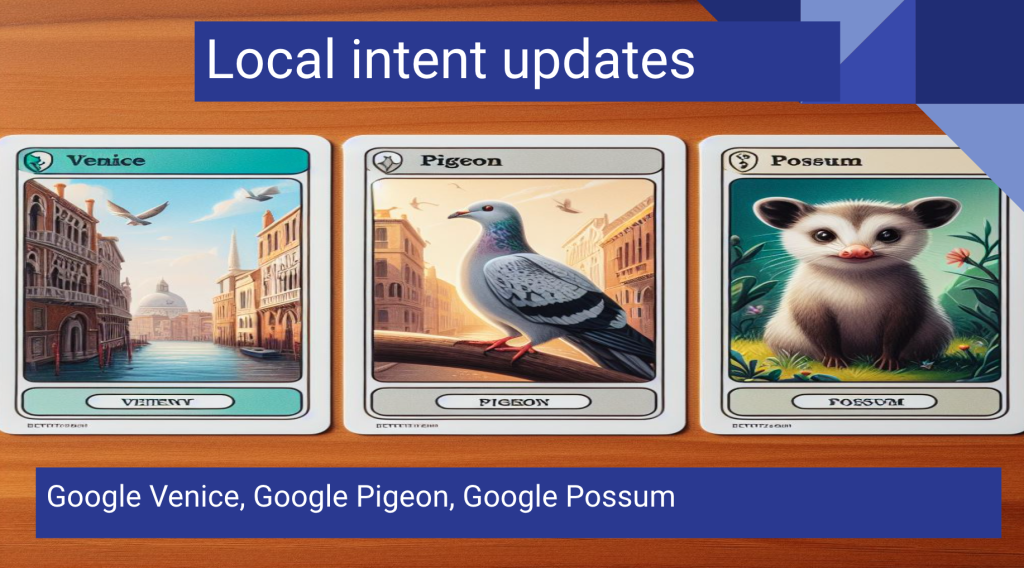Last Updated on 8th March 2024
Google constantly refines its strategies to enhance user experience and provide more relevant results. One of the pivotal updates that took the SEO community by storm was the Google Pigeon algorithm, a significant algorithmic shift that aimed to revolutionize local search. In this article, we delve into the details of the Google Pigeon update, exploring its launch date, purpose, impact on websites, and other crucial aspects that shaped the digital marketing landscape.
The birth of Google Pigeon Algorithm Update:
Google Pigeon was officially launched on July 24, 2014, and it marked a turning point in the way local search results were generated. This algorithm update primarily focused on improving the accuracy and relevance of local search queries, aiming to provide users with more meaningful and location-specific results.
Purpose of the update:
The core objective of the Google Pigeon update was to refine the way local businesses and services were displayed in search results. Google sought to enhance the connection between users and local businesses by delivering search results that were not only geographically closer but also more closely aligned with the user’s search intent. This was a strategic move to better cater to the growing trend of users searching for products and services in their immediate vicinity.
Key features and changes:
Local search ranking factors:
Google Pigeon brought about a significant shift in the factors influencing local search rankings. While traditional SEO factors like website relevance and authority remained crucial, Pigeon placed a heightened emphasis on location-based signals. This included the proximity of the searcher to the business location, the accuracy of business information, and the overall local relevance of the website’s content.
Improved distance and location parameters:
The update incorporated more accurate distance and location parameters, enabling Google to provide users with results that were not just based on city or region but on hyper-local data. This was particularly beneficial for mobile users seeking immediate solutions within their physical proximity.
Enhanced local pack results:
The local pack, a prominent feature in local search displaying a set of businesses related to the user’s query, received a makeover with Google Pigeon. The update refined the algorithms governing the local pack, ensuring that businesses with greater local relevance were more prominently featured.
Impact on directory and local listing sites:
Google Pigeon significantly influenced the visibility of directory and local listing sites. While some experienced an uplift in rankings due to their focus on local content and accuracy, others witnessed a decline if their information was inconsistent or lacked local relevance.
Impact on websites of Google Pigeon:
The Google Pigeon update had a profound impact on the visibility and rankings of numerous websites, especially those heavily reliant on local search traffic. Local businesses that aligned their online presence with accurate, up-to-date information and localized content witnessed positive outcomes. Conversely, websites with outdated or inconsistent local information experienced a drop in rankings.
It’s essential to note that the impact of Google Pigeon was not uniform across all industries. Sectors heavily reliant on local searches, such as hospitality, healthcare, and retail, saw a more noticeable shift in their rankings and visibility. Businesses that had invested in local SEO strategies before the update were better positioned to capitalize on the changes brought about by Pigeon.

Significant considerations for businesses:
Local SEO optimization:
Following the Google Pigeon update, local SEO optimization became more crucial than ever. Businesses needed to ensure their online presence reflected accurate and up-to-date information, including business name, address, phone number (NAP), and operating hours.
Content localization:
Pigeon emphasized the importance of content localization. Websites that tailored their content to the local audience, addressing regional nuances and preferences, gained favor in the eyes of the updated algorithm.
Mobile-friendly approach:
Given the increasing prevalence of mobile searches, businesses had to adopt a mobile-friendly approach. Google Pigeon placed significance on the mobile user experience, and websites optimized for mobile devices were more likely to benefit from the algorithmic changes.
Monitoring and adapting:
Businesses needed to stay vigilant and adapt their strategies based on ongoing changes. Regular monitoring of local search rankings and analytics data became imperative to identify shifts in performance and adjust optimization strategies accordingly.
Conclusion:
The Google Pigeon algorithm update represented a pivotal moment in the evolution of local search. Launched on July 24, 2014, with a focus on refining local search results, Pigeon aimed to provide users with more accurate and relevant information based on their location. The update brought about changes in local search ranking factors, improved distance and location parameters, enhanced local pack results, and influenced the visibility of directory and local listing sites.
For businesses, adapting to the new realities of local search became paramount. Those who invested in local SEO optimization, content localization, mobile-friendly approaches, and vigilant monitoring were better positioned to navigate the changing landscape and capitalize on the opportunities presented by the Google Pigeon algorithm update. As with any algorithm change, staying informed, agile, and proactive remains key for businesses aiming to thrive in the dynamic world of digital marketing.










